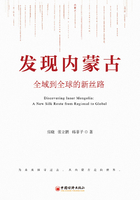There are exceptions,however.For example,D.Gale Johnson,in his"Resource Allocation under Share Contracts,"Journal of Political Economy(April,1950),is reluctant to accept the inefficiency argument in spite of his theoretical model which supports it.John Lossing Buck and James O.Bray argue against the inefficiency thesis on the grounds that observations of land use under share contracts fail to confirm the traditional belief.See J.L.Buck,Chinese Farm Economy(Chicago:University of Chicago Press,1930);and J.O.Bray,"Farm Tenancy and Productivity in Agriculture:The Case of the United States,"Food Research Institute Studies(1963).We shall discuss this in chapter 3.
[2].In the Philippines,for example,the rental share restriction was carried out simultaneously with a program of compulsory redistribution of land.See Frate Bull,"Philippine Land Reform,1950-1958,"International Cooperation Administration,USOMI Philippines(Manila,1958).
B.The Nature and Origin of Taiwan Land Reform
The definition of a land reform has been a controversial concept in the literature of land tenure.But the term"land reform"as used here has a simple meaning.It entails changes in laws pertaining to land ownership which affect wealth distribution or resource allocation.
In Taiwan,for example,the much publicized farm land reform did not spring up at one time:it was the product of a series of elaborate adjustments and enforcements of the laws already in existence.After the Japanese retrocession of Taiwan to China in 1945,the Chinese code of law pertaining to land rights came into force.This set of laws,the crucial articles of which will be discussed in the next section,has undergone rapid modification since April 1949.In the following four years,a total of over 350 articles were appended to define the Taiwan land reform.[1]Despite its complexity,we may generally divide the reform into three phases.
The first phase involved a rent limitation program,under which the rental percentage was reduced from an estimated mean of 56.8 percent to a uniform legal maximum of 37.5 percent of the annual crop yield.During this phase,two sets of provisions were established.The first set includes eighteen articles,promulgated and enforced in Taiwan from April 14,1949.[2]The second set includes thirty-one articles,promulgated on June 7,1951,and intended to go into effect in February 1952.[3]While the provisions of both will be examined in later chapters,it is the economic implications of the first set upon which I shall concentrate,for I could find no evidence that the second set was actually enforced.
The second phase of the land reform pertains to the sale of public lands to establish owner-farmers.[4]This program,promulgated in June 1951 and carried out from July 1951 to June 1953,covered a portion of farm lands which were under state ownership and had been leased to tenants.The magnitude of farming resources affected by this program was very small.[5]The third phase is the most complex and is generally regarded as the main part of the land reform in Taiwan.It involved the promulgation and enforcement of the"Land-to-the-Tiller Act,"beginning in January 1953.Under this program,landholdings of a private landowner in excess of three hectares were compulsorily purchased by the government.The compensation offered was two and one-half times the gross annual yield of the land being purchased,paid by the issuance of land bonds and industrial stocks of government enterprises.The purchased lands were resold to tenants in stipulated parcels at the same numerical prices,to be paid for in ten-year installments at no interest charge.After this compulsory redistribution of land,transfers of land rights among individuals were prohibited.[6]Neither the second nor the third phase of the Taiwan land reform will be covered in this study.
Despite the fact that the reform provisions are several and varied,two common policy intentions can be detected.First is the policy attacking tenancy either by intervening in the terms of the contract to"protect"the tenants or by abolishing tenancy altogether.A second intention is to force a redistribution of wealth in favor of the tenants.The lawmakers and reform officials in Taiwan had little difficulty justifying their reform measures.One claimed that the existing property system was simply out of date:
Land reform in Taiwan was carried out at just the right time.The time was opportune because by then the landlords had outlived their usefulness and landownership had become an obstacle to further development of agriculture as well as industry……With the limited farm land and the irrational tenure system,rural underemployment presented a serious problem.[7]
A second justification offered is that farming under tenancy,and share tenancy in particular,is economically inefficient on three counts.[8](1)Land-lease contracts were usually short-term or nonperpetual.This deprived tenants of security and therefore was inefficient.(2)The tenant's incentive to farm was discouraged by a share contract,since part of every unit of output produced would go to the landowner as rent.(3)And,since the rentals collected by landowners were exorbitantly high,the tenants lacked the ability to invest.
A third justification offered by reformers is that tenants were exploited by landowners.In addition to the high rent,a share contract,they claimed,was a device of exploitation.However,the evidence they cite to support the"exploitation"argument is perhaps contradictory to their claim of inefficient tenancy:for example,landowners frequently stipulated that their tenants provide seeds and fertilizers,and required that they work hard.[9]














